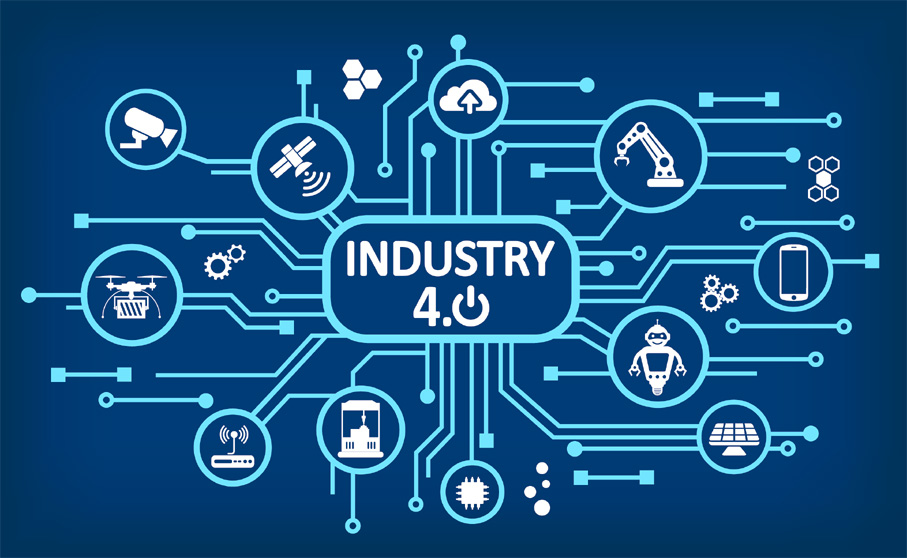INDUSTRY 4.0
Overview
Industry 4.0 refers to the latest phase of the industrial revolution, where the integration of digital, physical, and biological systems is transforming the way products are manufactured and services are delivered.
The central concept of Industry 4.0 is the use of cutting-edge technologies, such as artificial intelligence, the Internet of Things, robotics, and big data, to create “smart factories” that are highly automated, connected, and data-driven. One of the key benefits of Industry 4.0 is the ability to increase efficiency, productivity, and accuracy in production processes. With the use of advanced sensors, algorithms, and machine learning, factories can monitor and optimize their operations in real-time, reducing downtime, minimizing waste, and improving product quality.
Industry 4.0 also enables new forms of collaboration and communication between different systems and stakeholders, from suppliers to customers, which can lead to new business models and greater innovation.

5G is the fifth generation of cellular network technology that is designed to increase the capacity and speed of wireless data networks. It is intended to provide faster and more reliable connections for a variety of devices, including smartphones, tablets, and other Internet of Things (IoT) devices. Some of the key features of 5G technology include higher speeds, lower latency, and improved energy efficiency.
One of the main benefits of 5G is that it has the potential to offer significantly faster download and upload speeds than previous generations of cellular technology. In addition, 5G networks are designed to be more responsive, with lower latency than 4G networks. This means that data can be transmitted more quickly and with less delay, which is important for applications such as online gaming, virtual reality, and remote control of devices.
5G networks are also expected to be more energy efficient than previous generations, which will be important for the growing number of IoT devices that are being connected to the Internet.


In addition, 5G networks are expected to have a larger capacity than previous generations, which means that they will be able to support more devices simultaneously without experiencing network congestion. 5G technology has the potential to transform the way we live and work by enabling new and innovative applications and services that rely on fast and reliable connectivity.
DV Research provides advice and guidance to organizations seeking to implement or optimize 5G networks. This may include assistance with the planning, deployment, and management of 5G infrastructure and the selection of appropriate 5G-compatible devices and equipment.
5G services are beneficial for organizations that are looking to take advantage of the benefits of 5G technology, but may not have in-house expertise in this area. We can provide valuable insights and guidance on the latest 5G technologies, as well as help organizations navigate the complex process of deploying and managing 5G networks.
DV Research focuses on
Planning and designing 5G networks: We help organizations identify the most suitable 5G technologies and infrastructure for their needs, and provide guidance on how to design and plan 5G networks to maximize coverage and performance.
Deployment and integration: We assist with the implementation of 5G infrastructure and the integration of 5G networks with existing systems and devices.
Performance optimization: We help organizations optimize the performance of their 5G networks, including identifying and troubleshooting any issues that may arise.

Industrial Automation

Industrial automation using next-generation wireless technology involves the integration of advanced wireless technologies, such as 5G and IoT, into the manufacturing process. This allows for real-time monitoring and control of industrial equipment and systems, leading to increased efficiency, safety, and cost savings.
DV Research focuses on different applications in industrial automation
- Remote monitoring and control of machinery and production processes.
- Automated inventory management and tracking.
- Predictive maintenance using real-time sensor data.
- Improved worker safety through wireless communication and collaboration.
- Increased mobility and flexibility in the manufacturing process.
